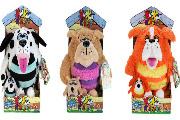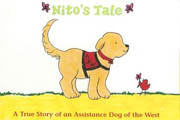Have you ever wondered how guide dogs know when to cross the road or how they know where to go? Most people believe that dogs know the difference between red and green traffic lights. In fact, some people even think guide dogs can tell time. Here's how guide dog works.
You might think it's the dog who makes the decisions when getting around but it is the handler who decides when to walk. Guide dogs go through extensive training before they are given a handler. Some of the things a guide dog must be able to do is keep a direct route (no stopping to smell other dogs), always stop at curbs, avoid obstacles - including low overheads, bring the handler to elevator buttons and stop at the bottom and top of stairs.
Guide dogs know what to do because they have what is called selective disobedience. Guide dogs must know to disobey any command that would put the handler in danger. They know how to follow orders and rely on their own judgement of the situation. This is really important at crosswalks. If there is no traffic coming and the light is red the dog has no idea and will just go. Like all other dogs, guide dogs are color blind. It is up to the handler to decide when to go and up to the dog to know when it is safe. The handler listens for traffic and then tells the dog "forward." If there is danger, the dog will not move until it is safe.
Guide dogs don't know their handler's destinations so it must follow instructions on how far to go and when to turn. It is up to the dog to avoid any obstacles along the way. To do this, they rely on each other. Handlers get to know and understand their guide dog so they know the movements the dog makes. Dogs that have been with their handler for a while get to know some destinations. All the handler has to do is tell the dog "go to the coffee shop" or "go to the grocery store" and the guide dog will know the entire route.
One of the most important rules for guide dogs is not being distracted by anything. While a harness is on, a guide dog knows it's at work. They shouldn't be petted or given treats unless the handler says it's ok. This helps them concentrate on the most important thing - getting their handler around.

































